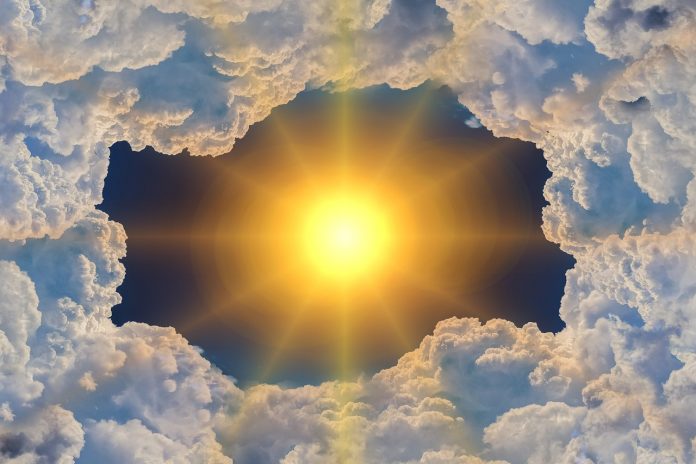The ozone layer is the protective shield available in the stratosphere and it protects the planet earth from the ultra-violet rays that are emitted by the sun. The layer of ozone acts as a natural filter whose primary function is to absorb the harmful ultraviolet (UV) rays. The ozone layer is present around 15 to 30 KM above the layer of earth and protects the earth from all 3 types of UV rays, which are: UV-A, UV-B, and UV-C. UV-A rays carry the minimum energy and affect life in a minimal way. Whereas the UV-B rays are the most powerful energy rays and can cause serious damage to human life. UV-C rays are absorbed by the oxygen present in the atmosphere and never reaches beyond the surface of the earth.
The layer of ozone was discovered more than a century ago by the French Physicists Henri Buisson and Charles Fabry back in 1913. The ozone layer in Hindi is termed as ओजोन परत. The ozone layer is capable of absorbing almost 99% of the harmful UV rays which produces harmful and devastating biological effects on human life and can even cause deadly skin cancer. But in the past couple of decades, scientists have observed that the ozone layer has started to deplete and after many studies, it has been found that the biggest reason behind the depletion of the ozone layer is the human activities, especially the chemicals carrying a large volume of chlorine and bromine. Scientists have named these chemicals as ODS (Ozone Depletion Substances). The major effect of the ozone layer depletion can be found in the Polar Regions.
Various types of Ozone Depleting Substances
1. Chlorofluorocarbons (CFCs)
Many scientists have revealed that CFCs alone is more than 80% responsible for the depletion of the ozone layer. The main application of CFCs is that it is used as a coolant in domestic and industrial applications such as refrigerators, air conditioners, and cars etc. CFCs are also used in many foam products such as cushions and mattresses.
2. Halons
The halons are mainly used in fire extinguishers and it also contributes to the depletion of the ozone layer.
3. Methyl Chloroform
The primary functioning of Methyl Chloroform is for cold cleaning along with the processing of chemicals and adhesives.
4. Hydrofluorocarbons (HFCs)
They were used as an alternative to the CFCs. However, they are not as harmful as CFCs but still impacts the ozone layer a lot.
Apart from all these man-made chemicals, many scientists have also found that there are some natural reasons as well, which have caused the depletion of the ozone layer. One such reason is the eruption of the volcanoes that have contributed to the depletion of the ozone layer. El Chichon in 1983 and Mt. Pinatubo back in 1991 are the main sources of that.
Impact of Ozone Layer Depletion and how it Affects the Environment
The depletion of the ozone layer is very dangerous to the planet earth and all the living beings. Below we are providing some of the harsh effects on the environment that ozone layer causes –
1. Impact on Human Health
The depletion of the ozone layer means that the human body will be exposed to the very harmful UV rays. When the human body gets in touch with the UV light then it may cause some serious problems like cataract, sunburns, quick aging and even causes skin cancer. When the UV rays attack the human body, it also hampers the immunity system
2. Impact on Marine Life
The ozone layer depletion not only hampers the life of human beings but marine life is also highly affected because of it. In the aqua food chain, planktons are on the upper level and get affected the most because the layer of ozone is continuously depleting. This affects the population of the planktons and if the situation remains the same, then it will completely disturb the aquatic food chain. Also, the overall health of the fishes gets affected when they are exposed to high UV rays.
3. Effects on Animals
Similar to humans, when animals are also exposed to UV rays emitted from the sun, then they are also prone to get suffered from skin cancer and their immune system also weakens up.
4. Impact on the Environment
Many crops and trees are vulnerable to the UV rays and exposure to them will lead in the growth of the crops and will reduce the quality as well. Some of the crops that get affected by the UV light includes wheat, corn, rice, and tomatoes etc, which are the basic necessity to live. Also, forests also get affected when the ozone layer is not able to prevent UV rays.
5. Effects of many Important Materials
Not only living organisms, but non-living organisms are also affected a lot by the UV rays. Materials such as plastic, rubber, wood, and fabrics are highly degraded when they are exposed under the UV light.
These are some of the top factors that are causing the depletion of the ozone layer and now we are heading towards that stage where it becomes crucial to take some strong steps to protect the ozone layer. Many NGOs and government are taking some steps in the direction to protect it. Various public awareness camps and seminars are regularly organized to make people aware of the importance of the ozone layer and how we can contribute towards its protection.

